Random Topic V3
Re: Random Topic V3
Ironically Jack Horner was a leading paleontologist in the study of Trexs, and contributed a lot to what we know about them. Then he suddenly jumped ship and started spreading ******** about it being a slow stupid scavenger.
And we have no ******* clue what any dinosaur growth rate is, because we have specimens of well known dinosaurs that aren't even showing us the full stages of their life (Hatchling, juvenile, adult, etc). We can date them back to whatever period they were in, but to get down to months? Impossible. We don't have anywhere near the complete skeleton of a Spinosaurus, so there's no way in HELL they would know the growth rate. Like I said, we don't even know the growth rate of well known dinosaurs, let alone ones we have one or two bones from.
And there's no way something could go from a 2 foot tall hatchling to a 47 foot giant in 1 month. No way. Its bones would break during the growth because of how ridiculously proportion they would be. I've seen my dog, a Great Dane, grow from a small puppy to an adult, and between that she was a clumsy awkward mess because of how oddly shaped her body was because of how tall she would be as an adult. A spino that has to grow 45 feet in a month would die before it did from a variety of causes.
And they flew, Gira. Get over it.
And we have no ******* clue what any dinosaur growth rate is, because we have specimens of well known dinosaurs that aren't even showing us the full stages of their life (Hatchling, juvenile, adult, etc). We can date them back to whatever period they were in, but to get down to months? Impossible. We don't have anywhere near the complete skeleton of a Spinosaurus, so there's no way in HELL they would know the growth rate. Like I said, we don't even know the growth rate of well known dinosaurs, let alone ones we have one or two bones from.
And there's no way something could go from a 2 foot tall hatchling to a 47 foot giant in 1 month. No way. Its bones would break during the growth because of how ridiculously proportion they would be. I've seen my dog, a Great Dane, grow from a small puppy to an adult, and between that she was a clumsy awkward mess because of how oddly shaped her body was because of how tall she would be as an adult. A spino that has to grow 45 feet in a month would die before it did from a variety of causes.
And they flew, Gira. Get over it.
- TyrannoTitan
Re: Random Topic V3
Kp that was the biggest load of bollocks maths I've ever seen. 
Also, your wrong, the Spinos fire breath kicks in around 1.5 to 3.5 months old.
In the movie, it clearly did not use ANY fire breath, so logic states that it must have been younger than 1.5, making it quite likely that it was around 1 month old.
^Very Real Paleontologist
EDIT:
Fire breath braw.
Also, your wrong, the Spinos fire breath kicks in around 1.5 to 3.5 months old.
In the movie, it clearly did not use ANY fire breath, so logic states that it must have been younger than 1.5, making it quite likely that it was around 1 month old.
^Very Real Paleontologist
EDIT:
How Quetzalcoatlus and co. protected themselves...
Fire breath braw.

"**** off TT"-Doc 42
Trophy art by CompyScavanger
Slow Posters Club
- Doc 42
- Cool Guy Moderator
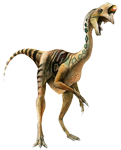
- Posts: 8618
- Joined: Fri Jan 05, 2007 9:20 pm
- Location: Ireland
Re: Random Topic V3
roflmao. of course, my responses are completely theoretical, and assuming a lot to make it possible to measure anything. Like I said, best that can be done without a degree in Biology, Biomechanics and numerous other biology-related fields. TT, Rex growth is fairly well charted. granted, not perfectly. but we do know that at around 12 years old they hit a period of incredible growth spurts that lasted till they were between 17 and 20 years old, during which they'd grow from around 10-15 feet, all the way up to the 42 feet of adulthood.
also, I agree that it was obviously not old enough to use fire breath. how else would it have been defeated by the EpicWoodenBarnDoorofShielding?
also, I agree that it was obviously not old enough to use fire breath. how else would it have been defeated by the EpicWoodenBarnDoorofShielding?
"Ah yes, organised chaos. the sign of a clever but ever-busy mind. To the perpetrator, a carefully woven web of belongings and intrigue, but to the bystander? Madness!"
–William Beckett, Lore of Leyuna RPG

–William Beckett, Lore of Leyuna RPG

-

The Kingpin - Webmaster
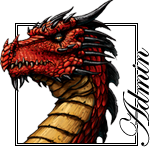
- Posts: 22584
- Joined: Thu Jan 01, 1970 12:00 am
- Location: Kuwait
Re: Random Topic V3
In real life a 1 month old Spino would know how to launch itself into a front flip, allowing its sail to take on supernatural cutting ability and saw through the door
But that Spino was merely a genetic monster and not a true Spinosaur, explaining the lack of this ability
But that Spino was merely a genetic monster and not a true Spinosaur, explaining the lack of this ability

-

C S - Bae Fish

- Posts: 20156
- Joined: Sat May 19, 2007 11:34 pm
Re: Random Topic V3
XD
you guys are nuts.
you guys are nuts.
"Gotta have a little sadness once in a while so you know when the good times come."
"Talent is a pursued interest. In other words, anything that you're willing to practice, you can do." ~ Bob Ross
"The future is always uncertain and painful but it must be lived." ~ Unknown
"Talent is a pursued interest. In other words, anything that you're willing to practice, you can do." ~ Bob Ross
"The future is always uncertain and painful but it must be lived." ~ Unknown
- Hopeflower
- Titanium Shortcake
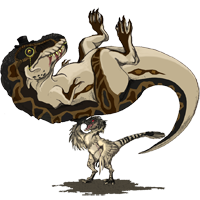
- Posts: 18702
- Joined: Mon Mar 12, 2007 7:17 pm
- Location: NY, USA
Re: Random Topic V3
we do not suffer from insanity. we enjoy every blasted minute of it! =D
"Ah yes, organised chaos. the sign of a clever but ever-busy mind. To the perpetrator, a carefully woven web of belongings and intrigue, but to the bystander? Madness!"
–William Beckett, Lore of Leyuna RPG

–William Beckett, Lore of Leyuna RPG

-

The Kingpin - Webmaster

- Posts: 22584
- Joined: Thu Jan 01, 1970 12:00 am
- Location: Kuwait
Re: Random Topic V3
... Alright people... let's be serious here. TO address KP's points of concern...
1. Well, the surface area of the wings is a very good point, and yes, many kinds of Pterosaurs were able to fly. However, and here's a very big however, Quetzalcoatlus was a far bigger animal than even the largest condor, and remember, most weight estimates for it have now been judged to be way too underscaled. And this is coming from paleontologists that are well-respected and know what they're talking about, not Jack Horner post-JP 3...
2. I'm not saying that Quetzalcoatlus was able to gallop across semi-arid plains or anything. I'm just saying that they were adapt on the ground, not fish out of water. Yes, they probably weren't able to run, but they could still work well on land.
3. Nice fishing thoery... that works out for Pteranodon nd other related Pterosaurs, but not for Quetzalcoatlus. WHy? Because they lived in semi-arid plains, far away from oceans and lakes (This is because their fossils have been found in the same area as Alamosaurus fossils, which most likely lived in semi-arid plains.)
4. Okay. Now look here. Nowher in EITHER of the Jurassic Park books does it mention Pterosaurs using the defense mechanism I am thinking about. However, the idea itself IS present in the second book... it's just used by something else...
Here is the second hint... Dragons: A Fantasy Made Real... IF no one can get it now, then I'll tell you the answer in a little bit...
1. Well, the surface area of the wings is a very good point, and yes, many kinds of Pterosaurs were able to fly. However, and here's a very big however, Quetzalcoatlus was a far bigger animal than even the largest condor, and remember, most weight estimates for it have now been judged to be way too underscaled. And this is coming from paleontologists that are well-respected and know what they're talking about, not Jack Horner post-JP 3...
2. I'm not saying that Quetzalcoatlus was able to gallop across semi-arid plains or anything. I'm just saying that they were adapt on the ground, not fish out of water. Yes, they probably weren't able to run, but they could still work well on land.
3. Nice fishing thoery... that works out for Pteranodon nd other related Pterosaurs, but not for Quetzalcoatlus. WHy? Because they lived in semi-arid plains, far away from oceans and lakes (This is because their fossils have been found in the same area as Alamosaurus fossils, which most likely lived in semi-arid plains.)
4. Okay. Now look here. Nowher in EITHER of the Jurassic Park books does it mention Pterosaurs using the defense mechanism I am thinking about. However, the idea itself IS present in the second book... it's just used by something else...
Here is the second hint... Dragons: A Fantasy Made Real... IF no one can get it now, then I'll tell you the answer in a little bit...

All hail the glory that is Tenshi, the Sunkern!
-
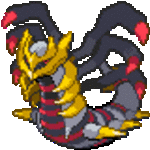
Giratina93 - Psuedo-Wyvern
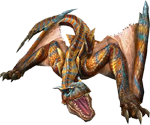
- Posts: 11587
- Joined: Sun Jan 04, 2009 9:47 pm
- Location: Studying the ancient art of perfection
Re: Random Topic V3
Kp: roflmao. Precisely. XD
Gira: Quetzalcoatlus omnommed the faces of babies. Problem solved. =D also you have to remember their bones were hollow, a flight trait.
Gira: Quetzalcoatlus omnommed the faces of babies. Problem solved. =D also you have to remember their bones were hollow, a flight trait.
"Gotta have a little sadness once in a while so you know when the good times come."
"Talent is a pursued interest. In other words, anything that you're willing to practice, you can do." ~ Bob Ross
"The future is always uncertain and painful but it must be lived." ~ Unknown
"Talent is a pursued interest. In other words, anything that you're willing to practice, you can do." ~ Bob Ross
"The future is always uncertain and painful but it must be lived." ~ Unknown
- Hopeflower
- Titanium Shortcake

- Posts: 18702
- Joined: Mon Mar 12, 2007 7:17 pm
- Location: NY, USA
Re: Random Topic V3
The Kingpin wrote:TT, Rex growth is fairly well charted. granted, not perfectly. but we do know that at around 12 years old they hit a period of incredible growth spurts that lasted till they were between 17 and 20 years old, during which they'd grow from around 10-15 feet, all the way up to the 42 feet of adulthood.
Source material or GTFO.
We can go "yeah, this is a juvenile Trex" or "this is an adult trex" but to my knowledge there is no way to determine its exact age in years, let alone months.
Also, Gira, air bladders yes could be possible.
- TyrannoTitan
Re: Random Topic V3
Actually, I can vouch for KP on Tyrannosaur growth.

That, is a chart of growth for various Tyrannosaurs. T-rex is the black line, and has the most pronounced growth.
As for the Quetzalcoatlus issue... both the light-weight bones and the air bladders are probably remniscent of when their kind did fly.. before they got too heavy...
As for my theory on how they defended themselves... it goes like this. (Please note that, since this is dealing with extinct animals, there's no scientific proof to go with this, and is simply educated guessing at best.)
Let's suppose that a trio of Quetzalcoatlus are moving along the plains, searching for lizards. Nearby, there's a herd of Tricerotops grazing on some shrubbery, and a bunch of Pachys fighting over mates. In the shadows, a young, 17 foot Tyrannosaur has its eyes set on a baby Triceroptops, at the edge of the herd.
But as the predator preapres its attack, it steps on a twig, the sound aleting the sharp ears of the Quetzalcoatlus, who whirls its head around to face it. It then lets out an ear-splitting screech that the other two Quetzalcoatlus join in. The noise is incredibly painful to the T-rex, who reacts to it like it's recieved a physical blow. Unfortunately for it, the incredibly loud screeching not only serves as a detterent to predators, but as an alarm call to other herbivores. The trikes immediately form into defensive formation, all of them barking and grunting at the T-rex. The pachies too get into defensive formation, and the Rex, realizing it's lost a potential meal, and unable to take the horrible noise, slinks off, heading for a nearby forest...
that, atleast in my mind, is probably how Quetzalcoatlus defended itself... unfortunately, there's no proof it did anythin glike that, but with dead animals, speculation is all a Scientist can do...

That, is a chart of growth for various Tyrannosaurs. T-rex is the black line, and has the most pronounced growth.
As for the Quetzalcoatlus issue... both the light-weight bones and the air bladders are probably remniscent of when their kind did fly.. before they got too heavy...
As for my theory on how they defended themselves... it goes like this. (Please note that, since this is dealing with extinct animals, there's no scientific proof to go with this, and is simply educated guessing at best.)
Let's suppose that a trio of Quetzalcoatlus are moving along the plains, searching for lizards. Nearby, there's a herd of Tricerotops grazing on some shrubbery, and a bunch of Pachys fighting over mates. In the shadows, a young, 17 foot Tyrannosaur has its eyes set on a baby Triceroptops, at the edge of the herd.
But as the predator preapres its attack, it steps on a twig, the sound aleting the sharp ears of the Quetzalcoatlus, who whirls its head around to face it. It then lets out an ear-splitting screech that the other two Quetzalcoatlus join in. The noise is incredibly painful to the T-rex, who reacts to it like it's recieved a physical blow. Unfortunately for it, the incredibly loud screeching not only serves as a detterent to predators, but as an alarm call to other herbivores. The trikes immediately form into defensive formation, all of them barking and grunting at the T-rex. The pachies too get into defensive formation, and the Rex, realizing it's lost a potential meal, and unable to take the horrible noise, slinks off, heading for a nearby forest...
that, atleast in my mind, is probably how Quetzalcoatlus defended itself... unfortunately, there's no proof it did anythin glike that, but with dead animals, speculation is all a Scientist can do...

All hail the glory that is Tenshi, the Sunkern!
-

Giratina93 - Psuedo-Wyvern

- Posts: 11587
- Joined: Sun Jan 04, 2009 9:47 pm
- Location: Studying the ancient art of perfection
Re: Random Topic V3
Posting a graph isn't making your point, need credible sources.
And...a screech. Really.
And...a screech. Really.
- TyrannoTitan
Re: Random Topic V3
1) that does not negate the fact it's wings' surface area would easily be enough to lift it. hell, with surface area like that, I'd estimate it being able to lift up to half a ton, possibly more, if we pay no regard to whatever shortcomings in bone strength there might be [though I believe there likely were none]. Being honest, though I respect the opinions of Paleontologists, that does not mean that I will disregard common sense in favour of their theories. that's what happened in the production of JP3, and we all know where that led. I will also point you to another pterosaur believed to live a terrestrial lifestyle, which you have also mentioned: Hatzegopteryx. Now. take into account it was enormous, possibly larger than any other pterosaur species currently known. Now consider the issue of it's habitat. Hatzeg island is known for having had insular dwarfism in almost all the dinosaur species found there: in other words, all the animals there were smaller than their mainland counterparts. reason for that was so that they wouldn't overburden the available resources [which would eventually result in them all starving to death once the herbivores had stripped the island clean]. So why, I ask, would the largest Pterosaur known to mankind, live on an island of dwarf dinosaurs? it defies logic.
My theory: Hatzeg island was a mating ground. A possible reason for the creatures to be found there [thus far], would be that perhaps the rigours of the mating season would be extremely taxing, resulting in large numbers of elderly creatures dying in the process. a documentary has already considered that mechanic, though not with Hatzegopteryx: Walking With Dinosaurs.
And even if that is not the case, they could be coastal creatures that fed off prey at sea. fish. and lived along the shores and cliffs like modern sea birds such as puffins and seagulls. dependence on a marine diet would mean the prey they fed off was not bound by the resources of the island. but that would also have required flight in order to fish. pterosaurs lack the anatomical adaptations that would make swimming possible.
returning to Quetzalcoatlus...
2) If you're on land, you need to run. you don't run? you'll get hunted down and torn to shreds. especially in an area filled with Dromeosaurs and super predators that could cover in a single stride what you'd spend a good 20 seconds to cover.
3) Keep in mind that any creature large enough to even GRAZE the scale of Alamosaurus would require a large amount of water to keep hydrated. food, a body can go without for a fair amount of time. water however, they cannot. and something the size of Alamosaurus would need a lot of it. there would likely have been rivers in various regions across the area the fossils were found. Rivers contain fish. therefore, food for Quetzalcoatlus.
as for your sonic boom theory, I think not. any sound loud enough to nearly deafen a Rex from a distance would also burst the Quetzalcoatlus' own eardrums [you just stated it had very keen hearing. whats protecting it? did it stuff earplugs in their ears before screeching or something? ].
].
And TT:
http://www.fmnh.org/museum_info/press/p ... e_age2.htm
http://abcnews.go.com/Technology/story?id=99477&page=1
http://www.ncbi.nlm.nih.gov/pmc/article ... 347508.pdf
enjoy
My theory: Hatzeg island was a mating ground. A possible reason for the creatures to be found there [thus far], would be that perhaps the rigours of the mating season would be extremely taxing, resulting in large numbers of elderly creatures dying in the process. a documentary has already considered that mechanic, though not with Hatzegopteryx: Walking With Dinosaurs.
And even if that is not the case, they could be coastal creatures that fed off prey at sea. fish. and lived along the shores and cliffs like modern sea birds such as puffins and seagulls. dependence on a marine diet would mean the prey they fed off was not bound by the resources of the island. but that would also have required flight in order to fish. pterosaurs lack the anatomical adaptations that would make swimming possible.
returning to Quetzalcoatlus...
2) If you're on land, you need to run. you don't run? you'll get hunted down and torn to shreds. especially in an area filled with Dromeosaurs and super predators that could cover in a single stride what you'd spend a good 20 seconds to cover.
3) Keep in mind that any creature large enough to even GRAZE the scale of Alamosaurus would require a large amount of water to keep hydrated. food, a body can go without for a fair amount of time. water however, they cannot. and something the size of Alamosaurus would need a lot of it. there would likely have been rivers in various regions across the area the fossils were found. Rivers contain fish. therefore, food for Quetzalcoatlus.
as for your sonic boom theory, I think not. any sound loud enough to nearly deafen a Rex from a distance would also burst the Quetzalcoatlus' own eardrums [you just stated it had very keen hearing. whats protecting it? did it stuff earplugs in their ears before screeching or something?
And TT:
http://www.fmnh.org/museum_info/press/p ... e_age2.htm
http://abcnews.go.com/Technology/story?id=99477&page=1
http://www.ncbi.nlm.nih.gov/pmc/article ... 347508.pdf
enjoy
"Ah yes, organised chaos. the sign of a clever but ever-busy mind. To the perpetrator, a carefully woven web of belongings and intrigue, but to the bystander? Madness!"
–William Beckett, Lore of Leyuna RPG

–William Beckett, Lore of Leyuna RPG

-

The Kingpin - Webmaster

- Posts: 22584
- Joined: Thu Jan 01, 1970 12:00 am
- Location: Kuwait
Re: Random Topic V3
Ah, Walking with Dinosaurs... my favorite thing made in the English-Speaking world... It's one of my main inspirations for animal behavior and designs in ISS (Hence I put in the giant over-wised Ornithoceirus, which I think was able to fly, if only because it was smaller and weighed less than Quetzalcoatlus.)
Now for the main issues...
Perhaps (And this is once again speculative thinking), they had special ear membranes designed to protect themselves from their own powerful screeches. It would make sense...
As for the island case, sure it's a place with lots of dwarf dinosaurs, but island dwarfism isn't the only thing that goes on. On the Island of Komodo, for instance, the largest Moniter Lizards, the Komodo Dragons live. There, they are at the top of the food chain, and hunt everything else. With few-to-no natural predators to harm it on Hatzeg island, and with food sources ready for it's own lind (Lizards, fish, baby dinosaurs, etc), Hatzegopteryx would have lived comftorably on the ground, hunting the plains and living like a stork.
To address the Water source thing... yes, there would probably be rivers nearby, with fish in it for our stork-like Pterosaurs to eat. But it's also likely that Alamosaurus simply was migrational, following the rainy season wherever it went. And, quite possibly, Quetzalcoatlus would follow behind the herds, providing as alarm towers and eating any lizards that are displaced by the herd...
As for the wing membrane... do we have any proof that Quetzalcoatlus had the same proportions for their wing membrane that Pteranodon and Ornithoceirus did? Truth is, we don't know if they had the same wing membrane proportions as other Pterosaurs. Perhaps, they didn't have any Wing Membranes at all...
To sum it up... this is what I think Quetzalcoatlus probably looked like:
http://upload.wikimedia.org/wikipedia/c ... sh2008.png
Now for the main issues...
Perhaps (And this is once again speculative thinking), they had special ear membranes designed to protect themselves from their own powerful screeches. It would make sense...
As for the island case, sure it's a place with lots of dwarf dinosaurs, but island dwarfism isn't the only thing that goes on. On the Island of Komodo, for instance, the largest Moniter Lizards, the Komodo Dragons live. There, they are at the top of the food chain, and hunt everything else. With few-to-no natural predators to harm it on Hatzeg island, and with food sources ready for it's own lind (Lizards, fish, baby dinosaurs, etc), Hatzegopteryx would have lived comftorably on the ground, hunting the plains and living like a stork.
To address the Water source thing... yes, there would probably be rivers nearby, with fish in it for our stork-like Pterosaurs to eat. But it's also likely that Alamosaurus simply was migrational, following the rainy season wherever it went. And, quite possibly, Quetzalcoatlus would follow behind the herds, providing as alarm towers and eating any lizards that are displaced by the herd...
As for the wing membrane... do we have any proof that Quetzalcoatlus had the same proportions for their wing membrane that Pteranodon and Ornithoceirus did? Truth is, we don't know if they had the same wing membrane proportions as other Pterosaurs. Perhaps, they didn't have any Wing Membranes at all...
To sum it up... this is what I think Quetzalcoatlus probably looked like:
http://upload.wikimedia.org/wikipedia/c ... sh2008.png

All hail the glory that is Tenshi, the Sunkern!
-

Giratina93 - Psuedo-Wyvern

- Posts: 11587
- Joined: Sun Jan 04, 2009 9:47 pm
- Location: Studying the ancient art of perfection
Re: Random Topic V3
Their bone structure is similar to that of others like it, so why would they have such things if not to use them? One could argue that we having birds that can't fly but have wings, but said wings are tiny in comparison; they adapted to land and phased out their own wings. Clearly this was not the case with Quetzalcoatlus.
- TyrannoTitan
Re: Random Topic V3
However, their limbs DID become more adapt at living on land... remember that their leg proportions are mor eakin to llamas and horses than to smaller Pterosaurs like Pteranodon and Eudimorphodon

All hail the glory that is Tenshi, the Sunkern!
-

Giratina93 - Psuedo-Wyvern

- Posts: 11587
- Joined: Sun Jan 04, 2009 9:47 pm
- Location: Studying the ancient art of perfection
Re: Random Topic V3
That just means they have the means to get around. They adapted to accommodate their ginormous wingspan.
- TyrannoTitan
Re: Random Topic V3
Mr. Crow wrote:Fire breath braw.
 I love this place.
I love this place.Clarity of thought before rashness of action...
- Evil Eye
- Carcharodontosaurus

- Posts: 3826
- Joined: Sat Jul 12, 2008 11:30 am
Re: Random Topic V3
Been playing a lot of Oblivion (Game) lately
I have to close a **** load of portals to Oblivion (Dimension), NPC's are ******* useless and I got turned into a vampire. Lovely
I have to close a **** load of portals to Oblivion (Dimension), NPC's are ******* useless and I got turned into a vampire. Lovely

-

C S - Bae Fish

- Posts: 20156
- Joined: Sat May 19, 2007 11:34 pm
Who is online
Users browsing this forum: No registered users and 38 guests
Powered by phpBB © 2000, 2002, 2005, 2007 phpBB Group
SoftWood design by Free Forum
Time : 0.050s | 11 Queries | GZIP : Off
SoftWood design by Free Forum
Time : 0.050s | 11 Queries | GZIP : Off
